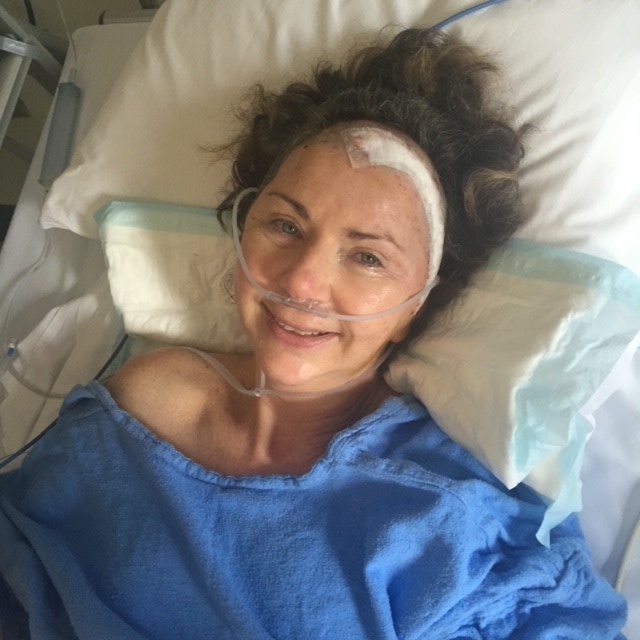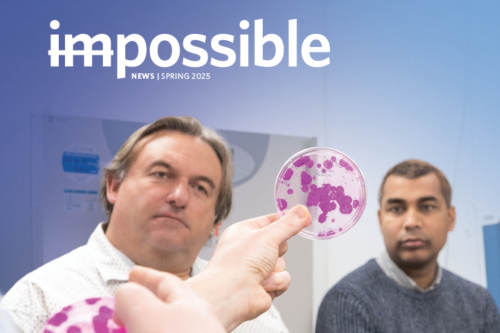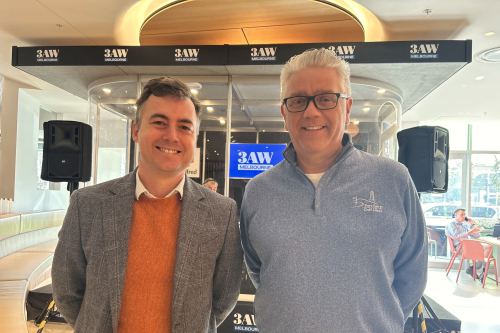Genevieve’s remarkable journey
_800_533.jpg)
To this day, Genevieve Gardner can’t believe the fortune which befell her upon suffering a ruptured aneurysm. From surviving a sensation that felt like two cars backing into her head simultaneously followed by weeks in The Alfred ICU, she emerged almost unscathed.
Losing consciousness almost immediately, she came to The Alfred requiring urgent attention, where she was put on a ventilator and intubated.
After three weeks in the ICU, Genevieve eventually emerged almost unscathed, thankful for not only the care that she experienced but the best technology available to her.
“My family and I can’t believe the care I received. They made all the difference and that’s why I’m here to tell the story,” she said.
The day of January 29, 2016, appeared to be a normal one for Genevieve.
Home alone, she got out of bed and went into the shower. What came next was a sensation unlike anything Genevieve had experienced before.
“I was washing my hair when I felt something in my head — I described it as two cars backing into my head simultaneously, like in a sandwich press,” she said.
She was transferred to The Alfred after scans confirmed a subarachnoid haemorrhage. Dr John McMahon, a consultant neurosurgeon at The Alfred, said while the initial aneurysm had a 20 per cent chance of fatality, the risk then was hydrocephalus — a build-up of spinal fluid in the brain.

Requiring bilateral clippings, Genevieve initially did well following surgery but developed vasospasm — which can result in strokes because not enough blood gets to the brain.
For a week, she was unable to understand what she was saying or get her words out. Dr McMahon said her consequent treatment in the ICU averted a massive stroke affecting Genevieve for the rest of her life.
“The Alfred is the best place to treat aneurysms due to its multi-disciplinary approach,” he said. “From the scrub nurse to the anaesthetist, the technicians, the back-up of the ICU, registrars and residents.”
With Genevieve “on a knife’s edge for a number of days”, she responded to treatment and made a full recovery.
“Whenever I drive past The Alfred, whenever I hear an ambulance, I think so fondly of that place,” she said. “They are the lifeblood of our community, they are such givers ... we are so blessed to have it in our community.”
_1000_667.jpg)
Positive outcomes like Genevieve’s are made more likely thanks to the generosity of donors who fund vital new technology and services at The Alfred.
A new O-Arm imaging system has helped reduce the number of returns to theatre for spine surgeries after it was bought and installed in 2021 for about $1 million, funded by donations.
The system is used by neurosurgical and orthopaedic spine surgeons and helps ensure accurate screw placement during difficult spine fusion procedures, which minimises harm to patients and reduces costly unplanned returns to theatre.
Orthopaedic surgery director Dr Susan Liew said buying the O-Arm was “a real game changer”.
“Having to re-operate on the patient is bad — for the patient, for the cost, for everything,” she said.
Described as a smaller, more mobile CT scanner, the instrument gives doctors a 3D picture of what is going on, as opposed to relying on a 2D X-ray.
“It puts us up to what’s considered gold standard around the world,” Dr Liew said.
The O-Arm has been in use since April 2021. Dr Liew said the O-Arm's use at The Alfred was still limited to procedures on the spine or pelvis, but hoped that in the future it could be used for anywhere in the body.
You can support the lifesaving work of The Alfred this tax time before June 30. To find out more, visit www.alfredappeal.org.au


